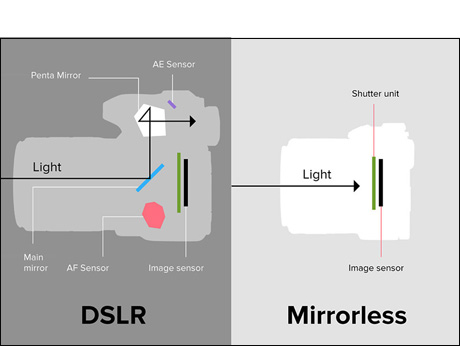
Replacing the mirror assembly in a digital SLR, makes cameras lighter, cheaper. But image-wise, it 's no drawback.
By Anand Parthasarathy
May 20 2019: Mirror, mirror on the wall, which is the best camera tech of them all? That's a tough one to answer, especially if one of the choices has ditched the mirror itself. The Single Lens Reflex (SLR) camera or its film-less successor the Digital SLR or DSLR, remains the most trusted camera format of the professional photographer. Serious artistes insist on seeing exactly what they were shooting before they pressed the trigger. To make that happen, the DSLR uses a mirror to shine light from the full frame of the optical viewfinder to the eye piece. Once you are satisfied, the mirror was retracted before the shot was captured. All this called for bulky and additional mechanical parts and springs.
If you insist on "what you see, is what you shoot", and want to do that with a variety of lenses from close-up to telephoto -- there was no option to the DSLR -- till now. Major DSLR makers have began offering an option, much lighter, somewhat cheaper and almost there when it comes to seeing what you shoot: they removed the mirror assembly and used the same imaging sensor to preview the image and capture it. If this sensor is as big as the image captured, they called it a full frame mirrorless camera.
Small downside: in low or bad light, the previewed image was somewhat dull in the early mirrorless cameras -- but technology is fast narrowing the gap.
And one upside: these days all digital cameras shoot video -- many to ultra HD or 4K quality. And with video, a mirrorless camera performs even better than a DSLR .... and also provides better burst photos (up to 5 per second).
The biggest advantage of a mirrorless camera over the point-and shoot digicams and indeed all phone cameras, is that you can switch lenses just like a DSLR pro.
Last month both Panasonic and Canon launched mirrorless cameras in India. Panasonic offered the Lumix S1 and SR with 24 MP and 47.3 MP sensors and a 24mm -105 mm lens.
Canon has brought its second mirrorless full frame camera, EOS RP, to India and provided me an early opportunity to try it out. Please see Product Pulse for a review